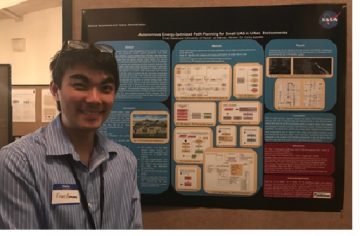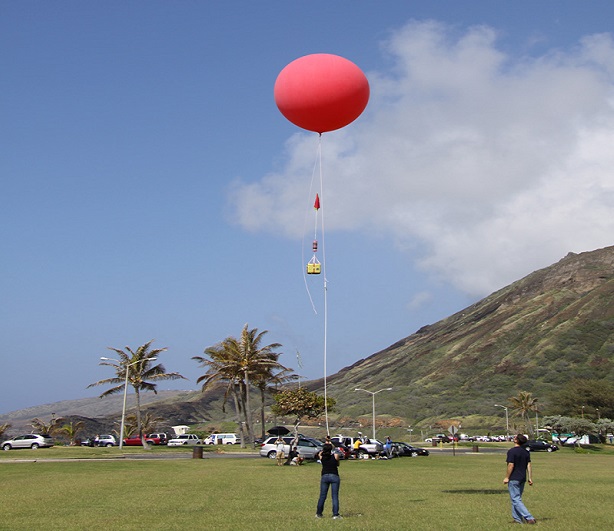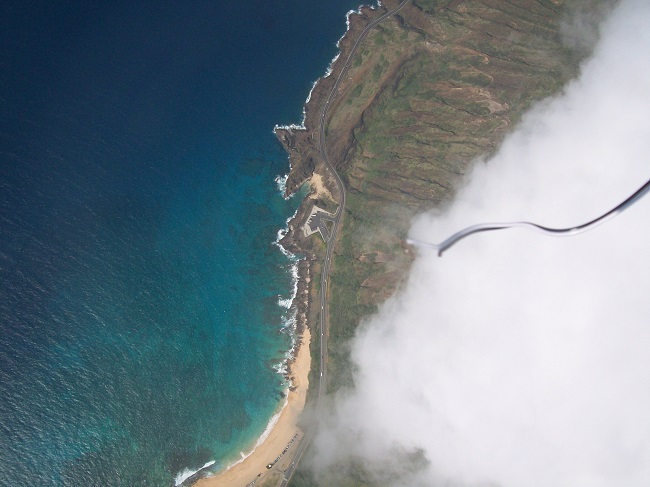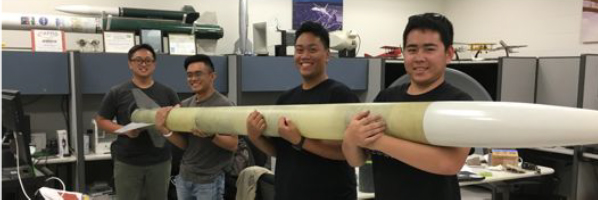The Univeristy of Hawaii at Manoa (UH-Manoa) College of Engineering (CoE) has recently established “Aerospace Engineering” track under Engineering Sciences Program with corresponding educational curriculum. Also, the Department of Mechanical Engineering (DME) of CoE has recently developed a curriculum for students interested in graduating with “Aerospace Engineering Concentration”. This curriculum also includes courses offered by the UH-Manoa School of Ocean and Engineering Sciences and Technology (SOEST), Hawaii Space Flight Lab (HSFL), and Hawaii Institute for Geophysics and Planetology (HIGP), and is expected to be approved and accredited by ABET. The CoE is well known in the nation and outside of the US by its key achievements and advances in a wide range of areas, including Autonomous Space, Aerial, and Ocean Systems, Robotics, Underwater Vehicle Design and Technology, Biomedical Engineering, Corrosion, Advanced Materials Manufacturing, Nanotechnology and Nanocomposites, Renewable Energy, Electronic Cooling, Applied Mathematics, and Computational Fluid Dynamics.
Over the last decade, as a result of close collaborations with HSFL, HIGP and SOEST, the DME has well positioned itself to research and educational developments in a wide range of areas of Aerospace Engineering, including Aeronautics, Astronautics, and Astrodynamics with applications. These particular areas include, but not limited to Unmanned Aerial Systems, Space Situational Awareness (SSA), National Security and Reconnaissance, Space Object Catalog Development, Advanced Space Mission Design, Small Satellite Technologies and Testing, Planetary Landing Technologies, Autonomous Multi-nodal Mission Operations, and Autonomous Space Systems.
The University of Hawaii Aerospace Engineering Program (UH-AEP) is dedicated to establishing and growing a well-trained workforce in the State of Hawaii, including a diverse set of students and researchers with broad skills in science, engineering and mathematics. It is aimed to address the core concerns and challenges that our state and our nation are facing, and thereby contributing to the integration of the Aerospace Engineering research and education. Although the UH-AEP is centered at the Department of Mechanical Engineering, but it intends to expand and become an independent unit of the UH-Manoa. As such, the UH-AEP contributes to academic curriculum and courses, and complements existing Hawaii-based research and development centers and assets, filling in a scientific and technological gap in Hawaii and providing desired and needed capabilities both state and nationwide, strengthening Hawaii’s aerospace-related technologies with the potential of becoming a beacon for international collaboration in Aeronautics, Astronautics and Astrodynamics research throughout the Asia-Pacific region.
The Program intends to develop and strengthen a collaboration and partnership with the National Aeronautics and Space Administration (NASA), Air Force Research Lab (AFRL), Air Force Office of Scientific Research (AFOSR), National Science Foundation (NSF), Office of Naval Research (ONR) and other federal and state-based organizations. It is planned to conduct and sustain operations by attracting various federal and private sector investments and by organizing and seeking matching funds to stimulate external funding.
There are many current and pending critical problems our state and country are facing at both fundamental and applied levels. Recognized as the research and educational priorities, these problems include, but not limited to the research and development of academic curriculum, new strategic theories, methods and capabilities in the following areas:
Academics:
- New academic courses in the emerging areas of aerospace engineering
- Exposure of the UH students to aerospace technologies
- Integration of air and space missions, including their goals, performances, accomplishments and outcomes into the related courses
Research:
- Autonomous guidance, navigation and control technologies for aerospace vehicles and applications to air and space maneuvers
- Small satellite technologies and applications
- Planetary landing and exploration technologies
- Earth sciences and applications
- Unmanned aerial systems and applications
- Aerospace mission design and launch capabilities
- Orbit determination, estimation, computation, and prediction of dynamics of space objects (SO) to serve and enhance SSA
- Development and maintenance of a modern space catalog that can be used to accurately and precisely track and support strategic identification and characterization of SO
- Developing and delivering the capability for physics-based modeling of the 6-Degree-of-Freedom dynamical evolution of space debris
- Leveraging Hawaii’s parallel processing capabilities (at the Maui High Performance Computing Center) to expand and enable new computational solutions to difficult problems of aerospace engineering
- Autonomous spacecraft flight operations with integrated autonomous ground mission operations













